
Joint Chief of Staff Chairman, General Mark Milley [Source: nypost.com] 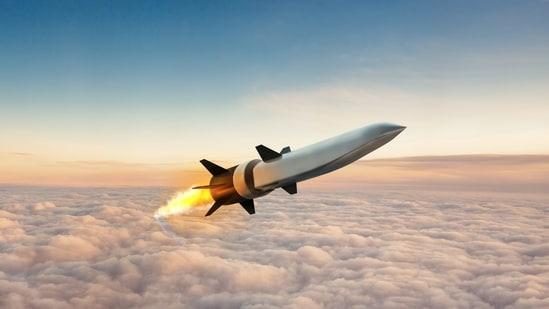
Hypersonic missile in artists’ rendition. [Source: hindustantimes.com]
Joint Chiefs of Staff Chairman Mark Milley claimed last week that China was close to a “sputnik moment” due to its successful test of a hypersonic missile.
However, U.S. space-based early warning systems can detect hypersonic missiles, marking them as no threat at all.
General Mark Milley, Chairman of the Joint Chiefs of Staff warned on Wednesday, October 27th, that China’s development of a hypersonic missile system is “very concerning,” calling it “very close” to a “sputnik moment” that triggered the space race during the Cold War.
“What we saw was a very significant event of a test of a hypersonic weapon system. And it is very concerning,” Milley said during an interview with “The David Rubenstein Show: Peer-to-Peer Conversations” on Bloomberg Television. “I don’t know if it’s quite a Sputnik moment, but I think it’s very close to that. It has all of our attention.”
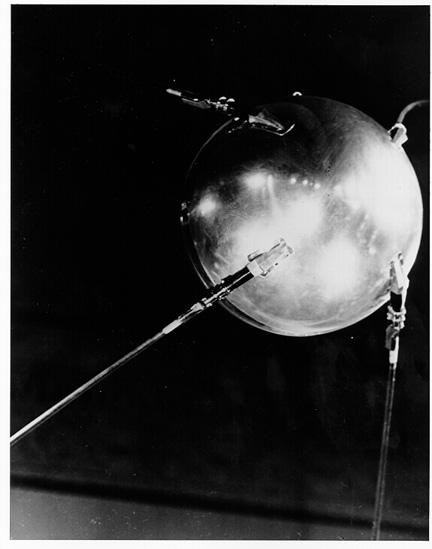
Sputnik was the first artificial satellite launched into low Earth orbit in 1957 by the Soviet Union, which sparked the space race between the U.S. and USSR.
Theodore Postol, professor emeritus of Science, Technology, and International Security at the Massachusetts Institute of Technology (MIT) and a former top policy adviser to the Chief of Naval Operations, says that the Sputnik analogy advanced by General Milley is off base.

“The launching of Sputnik,” Postol said in an interview with CAM, “signaled at the time that the Soviet Union was able to compete with the U.S. in space and had been a surprise.” However, in the case of China and the testing of a hypersonic missile, U.S. intelligence agencies were “already aware about it and knew that China is very advanced in science and technology.”
The hypersonic missile, furthermore, “does not threaten the U.S. population in any way or provide China any military-technological edge.”
This is because the U.S. has “extraordinary space-based early warning infrared systems with the ability to detect hypersonic vehicles as they descend into the atmosphere and become heated to very high temperatures.”
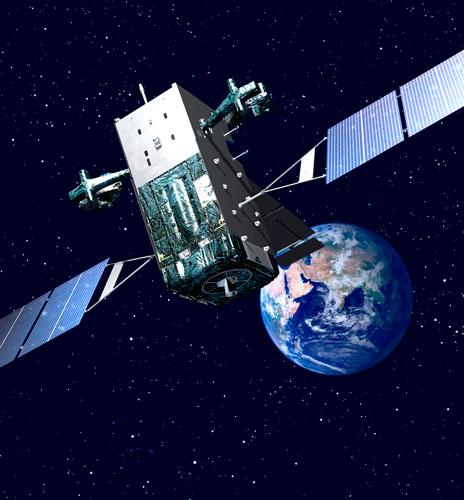
General Milley’s statement, according to Postol, reflects how “idiots in the Pentagon” and political appointees are trying to “push us [the U.S.] into military confrontation with China over nothing.”[1]
“Pushing us into military confrontation over nothing”
Launched via rocket, the hypersonic missile can travel over 6,000 miles at five times the speed of sound (3,836 mph). It runs parallel to the earth’s surface and can skip off it like a rock before reaching its destination after heating up to a very high temperature.
The space-based early warning system can see the hot spots of the hypersonic missile that’s moving when it dips into the boundary between space and the upper atmosphere. The exhaust from the hypersonic vehicle would also be recognizable.
According to Postol, a more real threat to U.S. national security are ballistic missiles—that Russia and China both possess—which are more accurate and launch balloons in space that radar cannot peer through and detect. The balloons are decoys which in frictionless outer space are very hard to distinguish from the actual warhead.
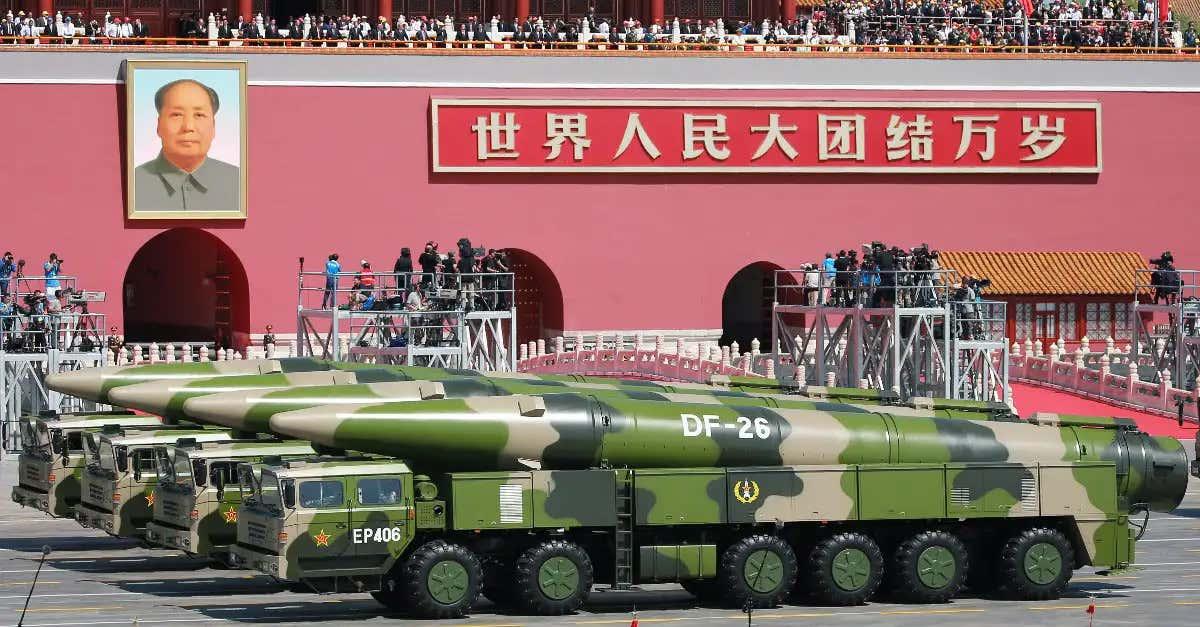
The U.S. military also cannot defend against cruise missiles that the Russians and Chinese have in their arsenals.

Testing the hypersonic missile, according to Postol, may provide “a statement from China that they are a technological competitor to the U.S.,” but it will “have little or no meaning in terms of adding significant nuclear-strike capabilities.”
“Someone gave Milley false information”
Postol says that he “does not think that Milley is a liar, but believes that he was provided false information from someone within the U.S. military or intelligence agencies and didn’t know any better.”
According to Postol, “Milley is both an unsophisticated consumer of intelligence and someone who is easily manipulated.”
In October, “when a drone strike in Kabul killed ten civilians, Milley stated that the attack was just”—though later acknowledged it had been a mistake.

“A dysfunctional system” and culture that “hypes threats”

Trained as a nuclear engineer at MIT, Postol said that his experience as a scientific policy adviser to the Chief of Naval Operations, Admiral Jim Watkins, from 1982 to 1984, “left him with a low regard for the accuracy of information provided by high-level government employees.”
This low regard has only intensified with time.
When Colin Powell gave his infamous speech at the UN in February 2003 about Weapons of Mass Destruction (WMD) in Iraq, Postol—then a Pentagon adviser—knew right away that every line in the speech was wrong and that Powell himself knew this.

Recipient of the Leo Szilard Prize in 1990 from the American Physical Society for “incisive technical analysis of national security issues that [have] been vital for informing the public policy debate” and Norbert Weiner Award from Computer Professionals for Social Responsibility for “uncovering numerous and important false claims about missile defenses,” Postol earned the ire of the Bush I administration when he challenged the efficacy of the Patriot missile system—which had reputedly intercepted Scud missiles launched against Israel by Iraqi ruler Saddam Hussein during the first Persian Gulf War.
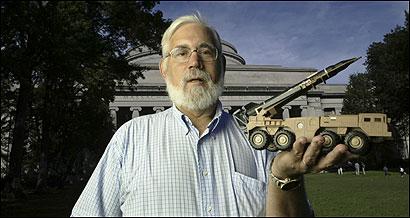
Since that time, Postol has been highly critical of the tearing up of arms control agreements like the Intermediate-Range Nuclear Forces (INF) Treaty with Russia reducing cruise missiles, and U.S. government investment in ineffective weapons systems that waste taxpayer dollars.
In Postol’s view, the intelligence agencies have some good people working for them, but have developed into “rigid, dysfunctional bureaucracies with weak leaders who are often politicized.”
Those who gain promotion “have their own motivations” and “do not always provide the best information.” They are “part of a culture that hypes threats,” and “provides higher ups with a storyline that is useful to the larger agenda which is to get more money from Congress.”
By amplifying threats, the intelligence agencies want to “scare people” so they will “sanction huge military budgets” and big-ticket “defense projects that often add little to national security.”
Syrian chemical gas hoax
According to Postol, the intelligence agencies deliberately deceived the American public when they claimed that Syrian President Bashar al-Assad carried out chemical weapon attacks against his own people—a claim that was adopted as a pretext for military strikes against Syria.
Postol reviewed key evidence about alleged attacks in August 2013 in the Ghouta district of Damascus and in April 2017 in the town of Khan Shaykhun in the Idlib Governate of Syria.
In the case of Ghouta, Postol said that the Obama White House presented a false intelligence report like in the Gulf of Tonkin incident that could have caused the nation to go to war.
According to Postol, what shows that the White House was lying is simple: The rockets that delivered the Sarin gas had a range of about two kilometers, roughly four to five times shorter than what was needed to execute the attack from Syrian-government controlled areas according to the White House map.

[Source: caucus99percent.com] 
Cylinder with Sarin gas that does not appear to have made the crater and was placed on the building in Khan Shaykhun afterwards. See below. [Source: caucus99percent.com]
In the case of the attack on Khan Shaykhun, Postol said that the Syrian air force bombed a building—a meeting place for extremist leaders—with a supply store in its basement that stored pesticides and other chemicals which released toxic materials when it was struck.
The crater in the building had to have been caused by artillery rockets, and the scene was later staged to make it look like it was the target of a sarin nerve gas attack by Assad.

-
Jeffrey St. Clair wrote in Counterpunch that “China’s successful hypersonic missile test insures that over the next decade trillions will be diverted from health care, climate change, education and infrastructure budgets into a bottomless Pentagon slush fund for developing, testing and deploying missiles that by definition (or at least according to the logic of MAD theory) can never be used.” ↑
CovertAction Magazine is made possible by subscriptions, orders and donations from readers like you.
Blow the Whistle on U.S. Imperialism
Click the whistle and donate
When you donate to CovertAction Magazine, you are supporting investigative journalism. Your contributions go directly to supporting the development, production, editing, and dissemination of the Magazine.
CovertAction Magazine does not receive corporate or government sponsorship. Yet, we hold a steadfast commitment to providing compensation for writers, editorial and technical support. Your support helps facilitate this compensation as well as increase the caliber of this work.
Please make a donation by clicking on the donate logo above and enter the amount and your credit or debit card information.
CovertAction Institute, Inc. (CAI) is a 501(c)(3) non-profit organization and your gift is tax-deductible for federal income purposes. CAI’s tax-exempt ID number is 87-2461683.
We sincerely thank you for your support.
Disclaimer: The contents of this article are the sole responsibility of the author(s). CovertAction Institute, Inc. (CAI), including its Board of Directors (BD), Editorial Board (EB), Advisory Board (AB), staff, volunteers and its projects (including CovertAction Magazine) are not responsible for any inaccurate or incorrect statement in this article. This article also does not necessarily represent the views the BD, the EB, the AB, staff, volunteers, or any members of its projects.
Differing viewpoints: CAM publishes articles with differing viewpoints in an effort to nurture vibrant debate and thoughtful critical analysis. Feel free to comment on the articles in the comment section and/or send your letters to the Editors, which we will publish in the Letters column.
Copyrighted Material: This web site may contain copyrighted material the use of which has not always been specifically authorized by the copyright owner. As a not-for-profit charitable organization incorporated in the State of New York, we are making such material available in an effort to advance the understanding of humanity’s problems and hopefully to help find solutions for those problems. We believe this constitutes a ‘fair use’ of any such copyrighted material as provided for in section 107 of the US Copyright Law. You can read more about ‘fair use’ and US Copyright Law at the Legal Information Institute of Cornell Law School.
Republishing: CovertAction Magazine (CAM) grants permission to cross-post CAM articles on not-for-profit community internet sites as long as the source is acknowledged together with a hyperlink to the original CovertAction Magazine article. Also, kindly let us know at info@CovertActionMagazine.com. For publication of CAM articles in print or other forms including commercial internet sites, contact: info@CovertActionMagazine.com.
By using this site, you agree to these terms above.
About the Author

Jeremy Kuzmarov holds a Ph.D. in American history from Brandeis University and has taught at numerous colleges across the United States. He is regularly sought out as an expert on U.S. history and politics for radio and TV programs and co-hosts a radio show on New York Public Radio and on Progressive Radio News Network called “Uncontrolled Opposition.”
He is Managing Editor of CovertAction Magazine and is the author of six books on U.S. foreign policy, including Obama’s Unending Wars (Clarity Press, 2019), The Russians Are Coming, Again, with John Marciano (Monthly Review Press, 2018), Warmonger. How Clinton’s Malign Foreign Policy Launched the U.S. Trajectory From Bush II to Biden (Clarity Press, 2023); and with Dan Kovalik, Syria: Anatomy of Regime Change (Baraka Books, 2025).
Besides these books, Kuzmarov has published hundreds of articles and contributed to numerous edited volumes, including one in the prestigious Oxford History of Counterinsurgency .
He can be reached at jkuzmarov2@gmail.com and found on substack here.





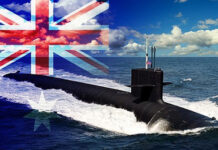





Dr. Vladimir Zelenko exposed Google executives that are taking hydroxychloroquine and ivermectin prophylactically. They are not taking the vaccine! These drugs are all on the World Health Organization’s “Model List of Essential Medicines” website. Unfortunately doctors are shamed, black mailed by certain individuals and even SUSPENDED by administration in order not to prescribe these medicines. Get your Ivermectin while you still can ivmpharmacy/com
[…] CovertAction Magazine 1 November 2021 […]
[…] original source of this article is CovertAction Magazine […]
In my last reply I said “If one visits China one will see extraoridary examples of superior technology but it appears that they are far behind Russia and China with respect to nuclear weapons.”
What I meant to say was this”If one visits China one will see extraoridary examples of superior technology but it appears that they are far behind Russia and United States with respect to nuclear weapons.
Sorry for this mistake.
[…] Kuzmarov: “Idiots in the Pentagon Are Pushing the U.S. into a Military Confrontation with China ov… […]
10 yrs. ago I went to China for 3 weeks. Into a shopping center toy story with a 4 story atrium – toy planes flying around 30′ in the air, I could buy for about $100. Into a phone store with cameras the size of a credit card. They’re so far ahead of the U.S. – the war would last a few days and the U.S. war machine would be no more! GOOD!
I am not an expert on this subject but when I search for information on the internet what I find consistently is that China is very far behind Russia and the United States when it come to Nuclear Weapons. China is extremely advanced in technology and manufactures drones that it sell to other countries. If one visits China one will see extraoridary examples of superior technology but it appears that they are far behind Russia and China with respect to nuclear weapons.
I found this article on the internet that argues that China’s hypersonic weapons may actualy be a problem:;
China’s Hypersonic Weapons Tests Don’t Have to Be a Sputnik Moment – War on the Rocks
Reasons Why China’s New System Is Actually a Problem
While the pursuit of hypersonic missiles as such is unlikely to change the strategic calculus, China’s tests are worrisome for a different reason. Hypersonic missiles are part of a broader move among the nuclear powers to modernize their nuclear arsenals and add all sorts of new, potentially destabilizing capabilities to their military toolkits.
After decades of sticking with a minimal deterrent, China is engaging in both nuclear expansion by building new missile silos and qualitative improvements in terms of investing in more diversified platforms to deliver nuclear payloads. The latter includes hypersonics, nuclear submarines, long-range missiles with multiple warheads, and air-launched ballistic missiles. And China is not the only one. All nuclear weapon states are currently modernizing their nuclear arsenals. The United States is planning to upgrade each element of its nuclear force posture, plus investing in a nuclear-armed sea-launch cruise missile and a low-yield warhead for the system. Russia, meanwhile, proposed a whole range of exotic weapon systems along its nuclear modernization plans, including long-range intercontinental ballistic missiles, a nuclear-powered, nuclear-armed cruise missile; a nuclear-powered, nuclear-armed underwater drone; a hypersonic air-to-ground missile; and a hypersonic boost-glide missile. Even smaller nuclear powers are taking steps to develop new systems. The United Kingdom’s integrated review reversed the country’s policy of reducing its nuclear capabilities. Both India and Pakistan also appear to be expanding their nuclear arsenals. North Korea has continued to advance its nuclear weapons program.
This new arms race — one almost entirely unconstrained by arms control measures — is troublesome for at least two reasons. First, states are increasingly seeking technologies and doctrines that straddle the boundaries between nuclear and conventional capabilities. While the United States, for example, is developing conventionally-armed long-range hypersonic missiles, China and Russia have opted for nuclear-capable versions. With the surge in dual-capable technology, one can imagine a situation in which states do not know whether an incoming missile has a nuclear or conventional payload. Moreover, a country may decide to co-locate nuclear and conventionally armed missiles. All of this increases the risk for strategic confusion and miscalculation.
Second, unlike for much of the Cold War, the United States and China have few formal and informal channels of communication on nuclear and military matters. Not only does this render it difficult to gauge the other’s capabilities and intentions, it could also create tricky situations in times of crisis. As tensions between the United States and China continue to grow — and tests like the hypersonic launches will only add to that process — it will be increasingly important to develop crisis management approaches and avenues for dialogue about strategic stability.
The US has had some stability with the original arms agreements that Trump disastrously withdrew from. The Biden administration is playing games with Iran (as Israel cheer leads the US on), Russia, and China. The new buildup in these nations and others are a direct results of the political instability that the US poses to them. And as North Korea has found, having a nuclear deterrent makes US war mongers think twice about attacking her. The other nations are starting to learn from North Korea’s example and are following suit. The end result is that the US will be facing dangerous, nuclear armed states who will most likely combine into coalitions to avoid having the US attack them without experiencing disastrous results…